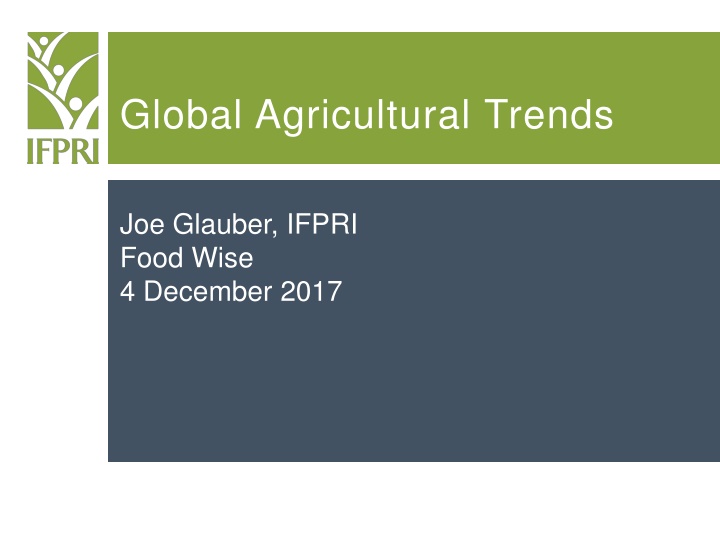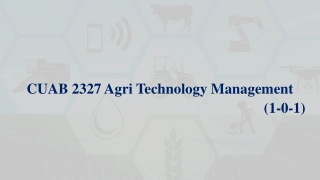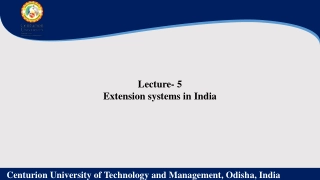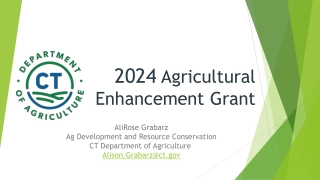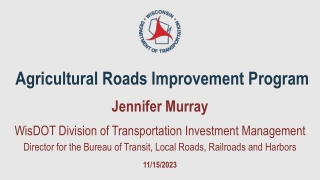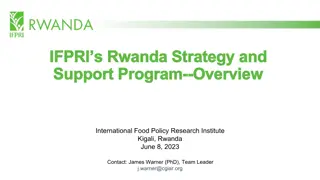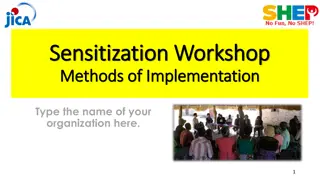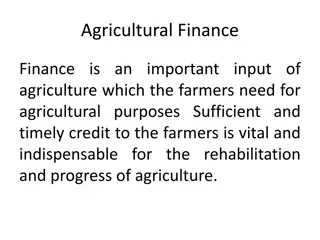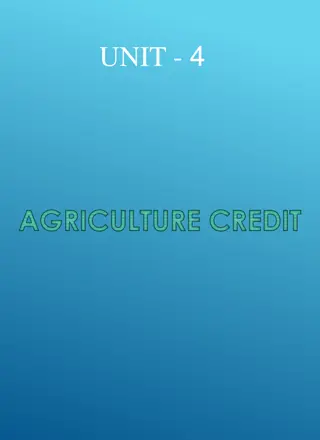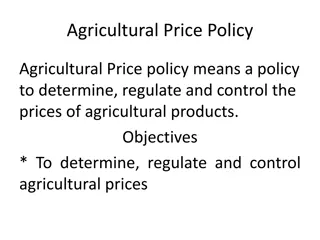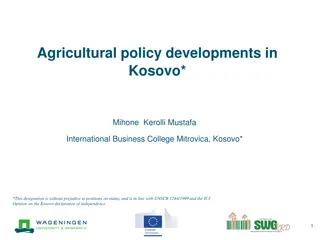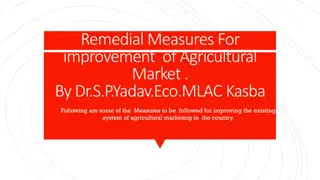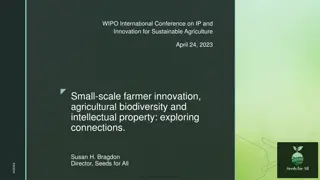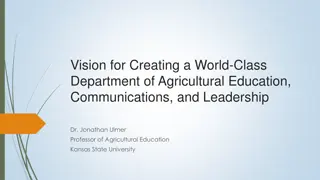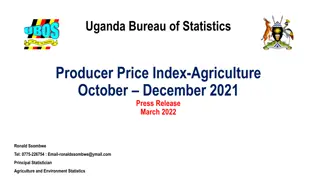Global Agricultural Trends: Joe Glauber, IFPRI
Analyzing agricultural trends in a global context is crucial for shaping policies and strategies. Joe Glauber, a renowned expert from IFPRI, provides insights into the dynamics impacting food systems worldwide as of December 2017. This publication serves as a valuable resource for understanding the current state of agriculture on a global scale and highlights key developments that are shaping the industry's future trajectory.
Download Presentation

Please find below an Image/Link to download the presentation.
The content on the website is provided AS IS for your information and personal use only. It may not be sold, licensed, or shared on other websites without obtaining consent from the author.If you encounter any issues during the download, it is possible that the publisher has removed the file from their server.
You are allowed to download the files provided on this website for personal or commercial use, subject to the condition that they are used lawfully. All files are the property of their respective owners.
The content on the website is provided AS IS for your information and personal use only. It may not be sold, licensed, or shared on other websites without obtaining consent from the author.
E N D
Presentation Transcript
Global Agricultural Trends Joe Glauber, IFPRI Food Wise 4 December 2017
World GDP growth Annual growth rate (%) 6 5 4 3 2 1 0 Source: IMF (Oct 2017)
World output Annual growth (%) 16 14 12 10 8 6 4 2 0 -2 -4 -6 China India Advanced economies Latin America and the Caribbean Sub-Saharan Africa Source: IMF (Oct 2017)
Growth in global consumption Annual growth rate (%) 3.5 3.0 2.5 Global population growth rate 2.0 1.5 1.0 0.5 0.0 Rice Wheat Corn Soya 2004/05-2013/14 2014/15-2023/24 Source: USDA, PSD database; ERS international baseline
Global import penetration Commodity 2000/2001 2005/2006 2010/2011 2015/2016 2016/2017 Wheat 17.3% 19.0% 20.3% 24.4% 24.5% Rice 6.1% 7.2% 7.9% 8.6% 8.6% Sugar 29.4% 34.5% 34.6% 31.0% 32.1% Soybeans 31.4% 29.6% 36.4% 42.0% 43.1% Vegetable oil 32.7% 34.1% 38.5% 41.8% 42.8% Feed grains 12.5% 11.4% 10.8% 13.5% 15.2% Swine meat 3.6% 5.3% 5.9% 6.6% 7.6% Poultry meat 9.1% 10.9% 11.6% 11.8% 12.3% Beef and veal 11.2% 13.2% 13.4% 16.5% 16.0% Source: USDA, PS&D database
Global import penetration 2000 2005 2010 2015 2016 Butter 5.6 5.9 3.9 3.1 3.7 Cheese 6.2 6.4 6.7 6.1 6.6 Whole milk powder 26.1 23.9 27.5 25.3 26.9 Skim milk powder 27.2 25.6 39.0 31.4 32.8 Source: USDA, PS&D database
US Dollar FRED Graph Source: Federal Reserve Bank of St. Louis
Food prices break with energy 2010 = 100 300 250 200 Energy 150 Food Fertilizer 100 Metals & Minerals 50 0 2005M11 2013M05 2000M01 2000M11 2001M09 2002M07 2003M05 2004M03 2005M01 2006M09 2007M07 2008M05 2009M03 2010M01 2010M11 2011M09 2012M07 2014M03 2015M01 2015M11 2016M09 2017M07 Source: World Bank Group Pink Sheet (Nov 2017)
FAO food price index 2002-2004 = 100 250.0 200.0 150.0 100.0 50.0 0.0 1991 1961 1964 1967 1970 1973 1976 1979 1982 1985 1988 1994 1997 2000 2003 2006 2009 2012 2015 Nominal Price Index Deflated Price Index Source: FAO
Monthly price indices, adjusted for inflation 2002-2004 = 100 230.0 Meats Dairy Cereals 210.0 190.0 170.0 150.0 130.0 110.0 90.0 70.0 50.0 4/2012 1/2017 1/2012 7/2012 1/2013 4/2013 7/2013 1/2014 4/2014 7/2014 1/2015 4/2015 7/2015 1/2016 4/2016 7/2016 4/2017 7/2017 10/2016 10/2012 10/2013 10/2014 10/2015 10/2017 Source: FAO
Issues Global supply chains Consolidation E-commerce Consumer trends Threats to the world trading system
